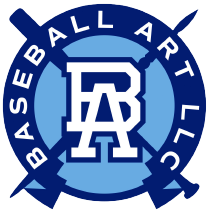Negro League Collecting
by Brian Dwyer, President Robert Edwards Auctions
People often ask what I collect, and I tell them that I have the best collection in the world twice a year. Every spring and every fall, I am entrusted with thousands of artifacts spanning the great history of America’s pastime and tasked with presenting them to the collecting public for consideration. I am an auctioneer, and I happen to own and operate Robert Edward Auctions, one of the world’s preeminent sports memorabilia auction houses.
The truth is that I started off like most collectors by collecting Topps trading cards. A pack here and there turned into a complete set, and completing a set from my birth year turned into trying to complete every Topps set from 1951 to the present. As I learned more about baseball cards and how extensive the possibilities were in this area of collecting, I branched out into prewar cards and nineteenth century cards, picking up examples of some of the game’s greats when they caught my eye and fit my budget. Learning more about these players and the time in which they played made me a better student of the history of the game, and I was immediately drawn much more strongly to the vintage game than I was to the modern sport.
Throughout my exploration of the game and its history, I could not help but read about and investigate the history of the Negro Leagues and the players, but my parallel exploration of the collectibles world was not revealing the same volume of possibilities as I was exposed to daily for the Major League of the same era. Surely there were relics of this league and its players, but what were they?
Admittedly, it wasn’t until working with consignors and collectors at Robert Edward Auctions that my eyes were opened wide to the world of Negro League collectibles. While the supply was smaller than that associated with the Major League, there was no shortage of rich history conveyed by each piece. I am most captivated by the imagery of the players and count several of the Negro League photographs, team postcards, and panoramas among the favorite items that we’ve handled. Chief among those items is the tremendous discovery of six large photographs featuring Rube Foster’s Chicago American Giants that we were privileged to present on behalf of a Canadian family, who found them among stored-away possessions. These six photographs show the team on a barnstorming tour, and Foster, in the middle, is dapperly dressed and flanked by twelve team members, including Pop Lloyd, Pete Hill, and Bruce Petway. It’s an outstanding image and one that sticks in my head when I consider the best photography I’ve handled. The story of how they entered the collecting world isn’t half bad either.
My background will always be in baseball cards, and as such, I can’t help but be fascinated by many of the issues that depict Negro League stars, often from their time playing for Cuban teams. Keeping with the theme of strong imagery, I prefer many of the real-photo cards, like Aguilitas or Billiken, which capture so well the faces of these players. It’s hard not to appreciate the statistics that they put up (although many of the statistical records are incomplete or lost from parts of the era) and wonder what the stars of these cards would have done against the stars of my Topps cards.
Autographs are also a big part of the collecting world, and sometimes they are a natural progression for card collectors. For me, obtaining cards of the likes of Mickey Mantle or Honus Wagner and learning about their impact on the game eventually led to aspiring to own an autograph of some of the bigger names. What collector wouldn’t think owning a Babe Ruth autograph was neat? (Disclaimer: I know there are some, but for many, Ruth is king, and something he signed, while plentiful, wouldn’t not be cool.) Luckily, decades ago, these players achieved a level of celebrity that caused fans to seek out signatures on any number of different items. It has always struck me at how few signatures of even the greatest stars of the Negro Leagues exist. In 2015, we offered an incredible appearance contract for Satchel Paige that was co-signed by J. L. Wilkinson, an influential executive responsible for the formation of the Negro National League, and Oscar Charleston, considered by many to be best player ever in the history of the Negro Leagues. Two of most influential figures in the history of the league, and we were only able to document two other Wilkinson signatures and six other Charleston signatures. Equally as rare is the signature of Josh Gibson, the league’s most prodigious power hitter, credited on his Hall of Fame plaque with over 800 home runs. When we offered a baseball signed by him in 1945, it was one of only six signed balls we’d ever heard of existing. Holding these pieces, which were held by those men at one time, was, to me, more powerful than any Ruth signature I’ve ever held.
There are several reasons why my “collection” twice a year can be considered the best in the world. Some will measure it by value. Others will measure it by breadth. I consider both of those to be interesting elements of the “collection,” but the fact that I can learn from many of the items we handle and grow my understanding of the players and the time makes it priceless to me. It’s as much or more about collecting knowledge than it is collecting things.

 Brian Dwyer is currently
Brian Dwyer is currently 